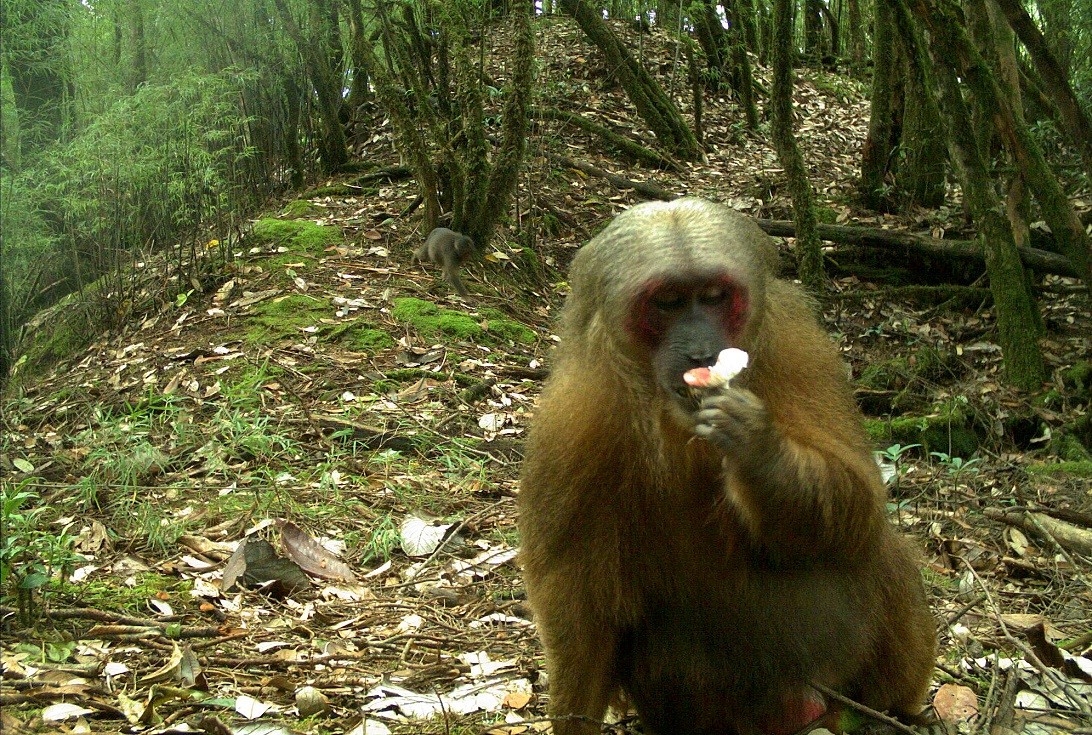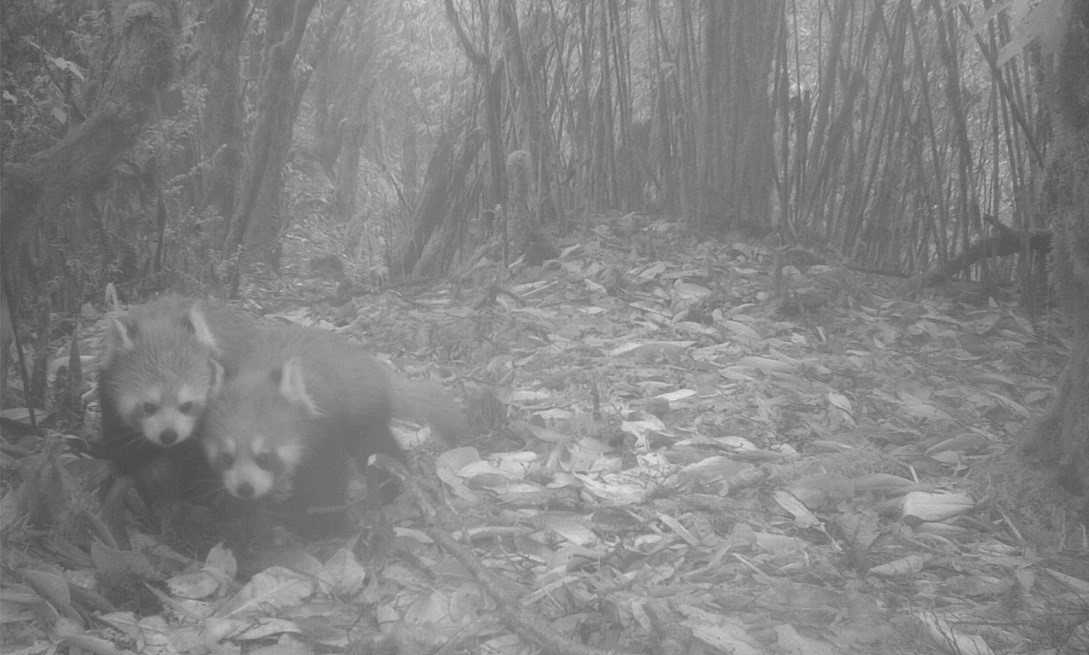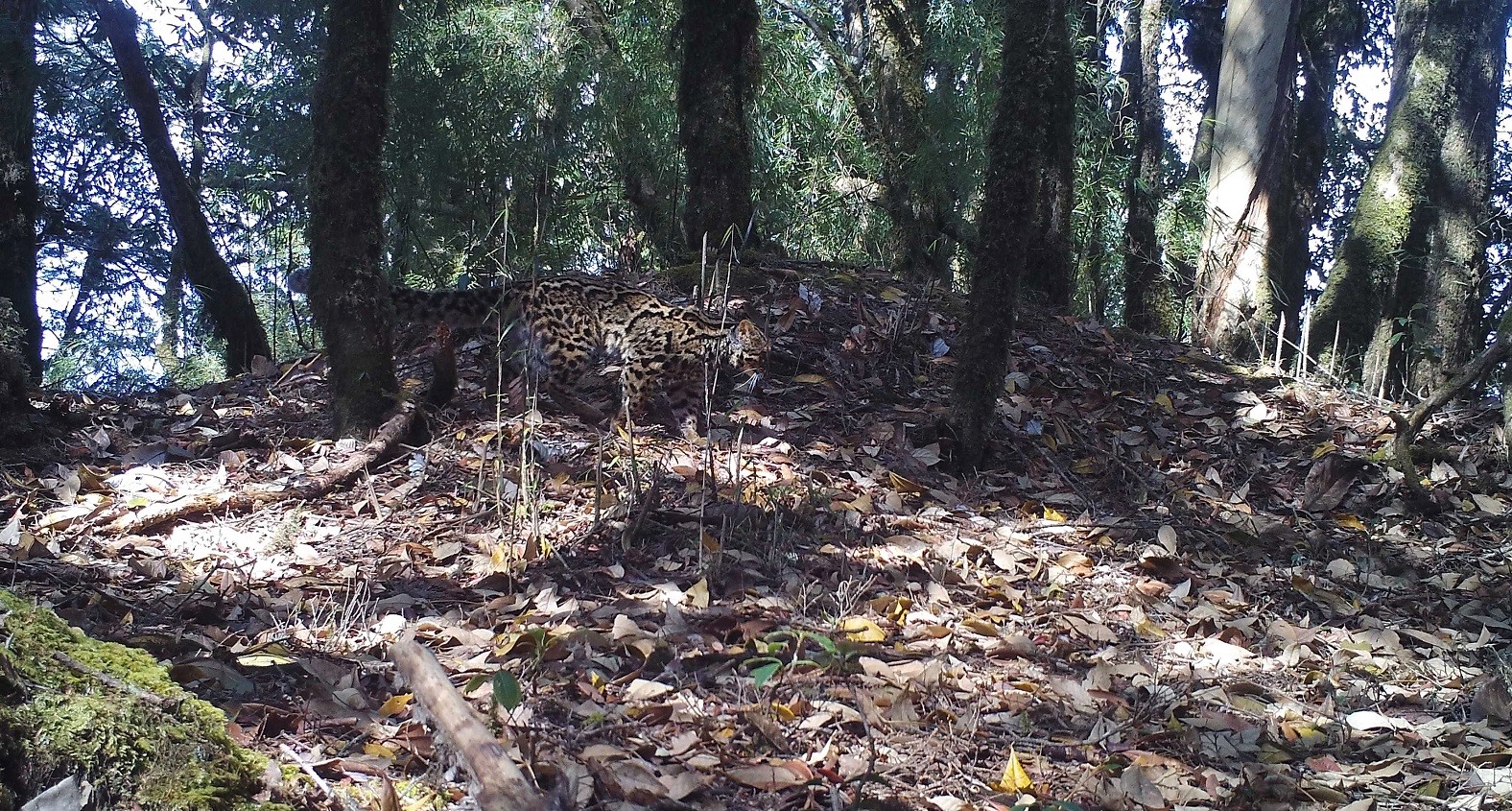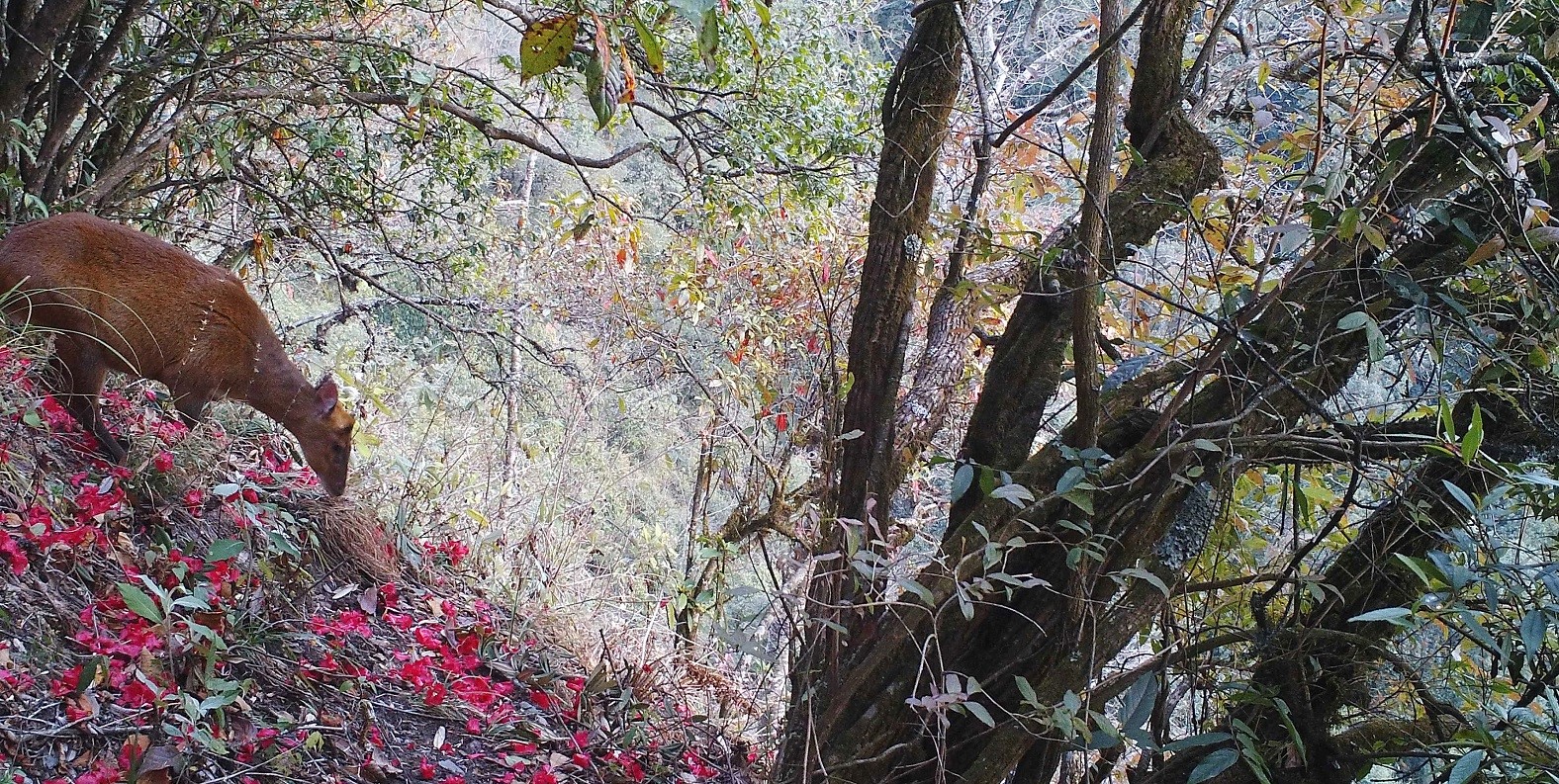Mount Gaoligongshan through the lens of camera traps
Mount Gaoligongshan in western Yunnan extends from the Tibetan Plateau to Indochina, forming the watershed of the Irrawaddy and the Salween Rivers. Positioned at the crossroads of the Palearctic and Indo-Malayan Realms, Mount Gaoligongshan is considered one of the world’s richest biodiversity hotspots. In recent years, KFBG have been working with Tengchong Bureau of Gaoligongshan National Nature Reserve to put up camera traps to better understand the wildlife that calls this majestic mountain range home. Here are some of the latest photos:

Stump-tailed Macaque (Macaca arctoides)
IUCN Red List: Vulnerable
Like people who are born and raised in Yunnan, the Stump-tailed Macaque has a liking for mushrooms. On an August afternoon, this individual was caught stiffing a mushroom before savouring it like a true gastronome. It’s not the first time this behaviour was recorded by camera traps. We cannot help but wonder if the macaque’s sense of smell can help it distinguish poisonous mushrooms.
Asiatic Black Bear (Ursus thibetanus)
IUCN Red List: Vulnerable
To keep the mosquitos at bay during the rainy season, this Asiatic Black Bear spent 15 minutes wallowing in mud while giving us a glimpse of the characteristic “white bow” on its chest.

Red Panda (Ailurus fulgens)
IUCN Red List: Endangered
In the winter, most mammals have moved from their high-altitude abodes to low- altitude destinations which are relatively warmer. But these two Red Pandas have stayed put, snuggling up against each other in the biting cold.

Marbled Cat (Pardofelis marmorata)
IUCN Red List: Near Threatened
Can you see what we see? This Marbled Cat was very successful at blending in with the fallen leaves and dappled light of the forest. Like its cousin the Clouded Leopard (Neofelis nebulosa), the Marbled Cat needs mature forests to survive. Our long-term monitoring showed that the Marbled Cat is not rare in the evergreen broadleaf forest above 2000m in elevation, and it is captured on our camera traps more frequently than the widely distributed Leopard Cat (Prionailurus bengalensis) which can also be found in Hong Kong.

Spotted Linsang (Prionodon pardicolor)
IUCN Red List: Least Concern
The Marbled Cat is not the only resident of Mount Gaoligong that loves flaunting its long thick tail. The Spotted Linsang has such a habit too. But its beautiful nine-banded tail is not just for show. It is useful for balancing whilst climbing. It was once seen agilely leaping onto a tree and going after a little squirrel (Tamiops sp.). This secretive species is not easily observed and very little is known about it.
Forest Musk Deer (Moschus berezovskii)
IUCN Red List: Endangered
Musk deer is famous for the distinctive scent harvested from glands near its rear and used to make perfumes, but what you might not know is that male musk deer also have glands on the upper side and two sides of its tail that produce secretions to mark its territory and attract females. Studies found that the Himalayan Musk Deer (Moschus chrysogaster) and Siberian Musk Deer (Moschus moschiferus) both mark their scent in the wild by reversing into a fallen branch or bamboo and rubbing their tail glands against it for nine to 30 seconds. Most studies in China about the Forest Musk Deer are based on captive populations, thus it’s exciting to observe this behaviour in the wild.

Barking Deer (Muntiacus vaginalis)
IUCN Red List: Least Concern
Attracted by a carpet of fuchsia-coloured rhododendron, this Barking Deer enjoyed floral feast before using the glands beneath its eye to make a marking on the ground and then relieving itself, giving back to nature.
Chinese Goral (Naemorhedus griseus)
IUCN Red List: Vulnerable
You wouldn’t find the Barking Deer or the Tufted Deer on this exposed mountain ridge because there is nowhere for them to run for cover should their predator come after them. On the other hand, this is the turf of the Chinese Goral. This goat-like species feels most at home on rocky crags and cliffs unreachable to their predators.

